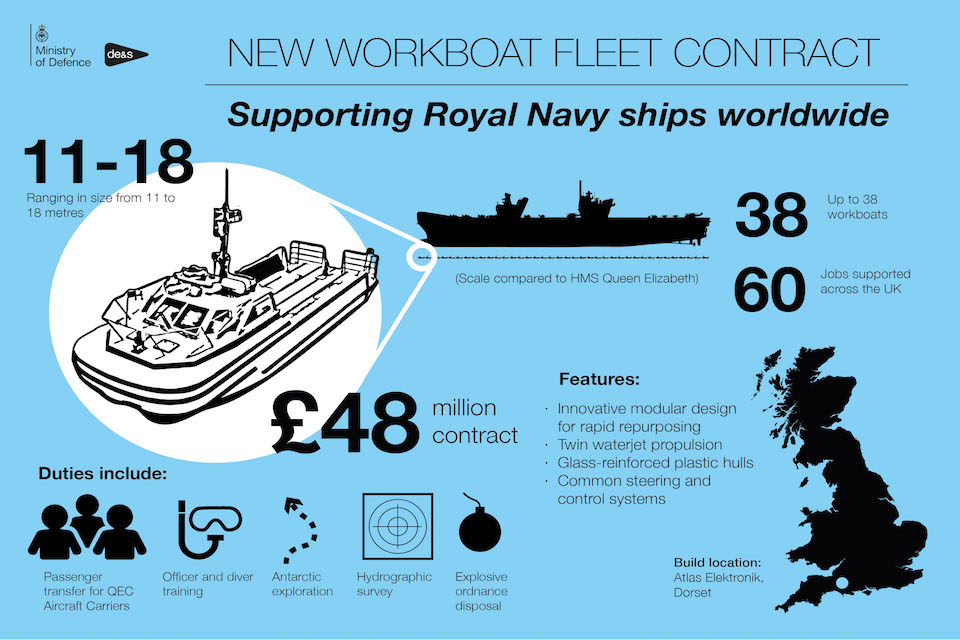Greeted by thousands of people lining the Portsmouth seafront, the 65,000-tonne carrier was met with the warmest of welcomes as she arrived in her home port this morning.
Sailors lined the flight deck of the largest warship ever built for the Royal Navy as she passed Portsmouth’s Round Tower. HMS Queen Elizabeth was also greeted with a flypast from the Fleet Air Arm, including Wildcat and Merlin helicopters and Hawk jets.
Secretary of State for Defence Sir Michael Fallon said:
Today we welcome our mighty new warship, HMS Queen Elizabeth to her home for the very first time. She is Britain’s statement to the world: a demonstration of British military power and our commitment to a bigger global role.
The thousands of people across the UK who have played a part in building her and her sister ship, HMS Prince of Wales, should be immensely proud as our future flagship enters Portsmouth. She has made good progress in sea trials and will now embark on the next phase of preparations that will see the return of Britain‘s carrier strike ability.
When she enters service she will help keep Britain safe at a time of increased threats, able to fill multiple roles from providing air power anywhere at any time to fight future campaigns, supporting allies or delivering humanitarian aid.
The Carrier programme has brought together the best of British industry, with construction taking place across six cities and involving more than 10,000 people. This includes 700 businesses and suppliers, 800 apprentices and nearly 8,000 jobs at shipyards around the UK.
The UK has 11 state-of-the-art F-35 Lightning II jets and 120 UK personnel training in the United States. By the end of this year that will be 14 jets, with trial flights from the carrier’s deck on track to begin next year.
Captain Jerry Kyd, the Commanding Officer of HMS Queen Elizabeth, said:
HMS Queen Elizabeth’s first entry into her home port of Portsmouth is an historic, proud and exciting occasion, not only for those of us serving in her, but also for the wider Royal Navy, the city of Portsmouth and the entire nation.
The UK’s future flagship, as well her sister ship HMS Prince of Wales, will be powerful symbols of Britain’s outward facing global character and ambition. The Royal Navy has a very special relationship with Portsmouth dating back half a millennium and both carriers will ensure the Navy’s city remains the focal point of our great nation’s maritime power for generations to come.
The ship will berth at the newly-named and upgraded Princess Royal Jetty at Her Majesty’s Naval Base Portsmouth, which will be home to both of the Royal Navy’s new aircraft carriers. The second, HMS Prince of Wales, will be officially named in a ceremony at Rosyth next month.
The berth has been upgraded and strengthened to support the carriers as part of a £100 million raft of infrastructure upgrades which took place ahead of the arrival of the ship.
A total of 3.2 million cubic metres of sediment, equivalent to 1,280 Olympic swimming pools has been removed from the harbour and approach channel, making it wide and deep enough to accommodate the enormous 65,000 tonne ships.
Sir Peter Gershon, Chairman of the Aircraft Carrier Alliance, said:
I am incredibly proud to witness HMS Queen Elizabeth arrive at her home port of Portsmouth Naval Base having successfully completed the first phase of her sea trials programme.
Over 10,000 people have come together to bring HMS Queen Elizabeth and HMS Prince of Wales to life, from early design to the magnificent ships they are today. It is thanks to their industrious endeavours and pride that we have achieved this historic moment in the programme to bring HMS Queen Elizabeth into service.
We’re excited to complete the remainder of her test and commissioning programme before delivering her to the Royal Navy by the end of the year.
Leading Airman Liam Forgeron, 28, from Portchester, is an aircraft handler on board HMS Queen Elizabeth. He said:
Being a local lad, I am extremely proud that Portsmouth will now be the base port for the nation’s future flagship.
The historic port has a long and proud association with the Royal Navy and the arrival of HMS Queen Elizabeth will cement this relationship for a further 50 years. As a Royal Navy aircraft handler, serving on board this mighty vessel is a real honour, as I too get to make history in my home town.
Both aircraft carriers are being delivered by the Aircraft Carrier Alliance, a partnership between the Ministry of Defence and industry.
Carrier Key Facts
- Each carrier weighs 65,000 tonnes and is 280 metres in length.
- Top speed is upwards of 25 knots.
- The carriers will have a crew of around 700, increasing to1,600 when a full complement of F-35B aircraft and four Crowsnest helicopters are embarked.
- The flight deck is 70 metres wide and 280 metres long – enough space for three football pitches
- Each carrier keeps 45 days’ worth of food in its stores.
- Each carrier is made up of 17 million parts.
- There are 364,000 metres of pipes inside each of the Ships.
ENDS
Notes to Editors
- Imagery is available at Defence Imagery
- For more information contact the MOD News Desk on 0207 218 7907 or Royal Navy communications officer Sam Bannister on 023 9262 5256 or email sam.bannister@royalnavymail.mod.uk.
- For the latest news follow us on Twitter at @DefenceHQ.
- Keep up with news and updates from the Royal Navy and Royal Marines by following @RoyalNavy on Twitter.
